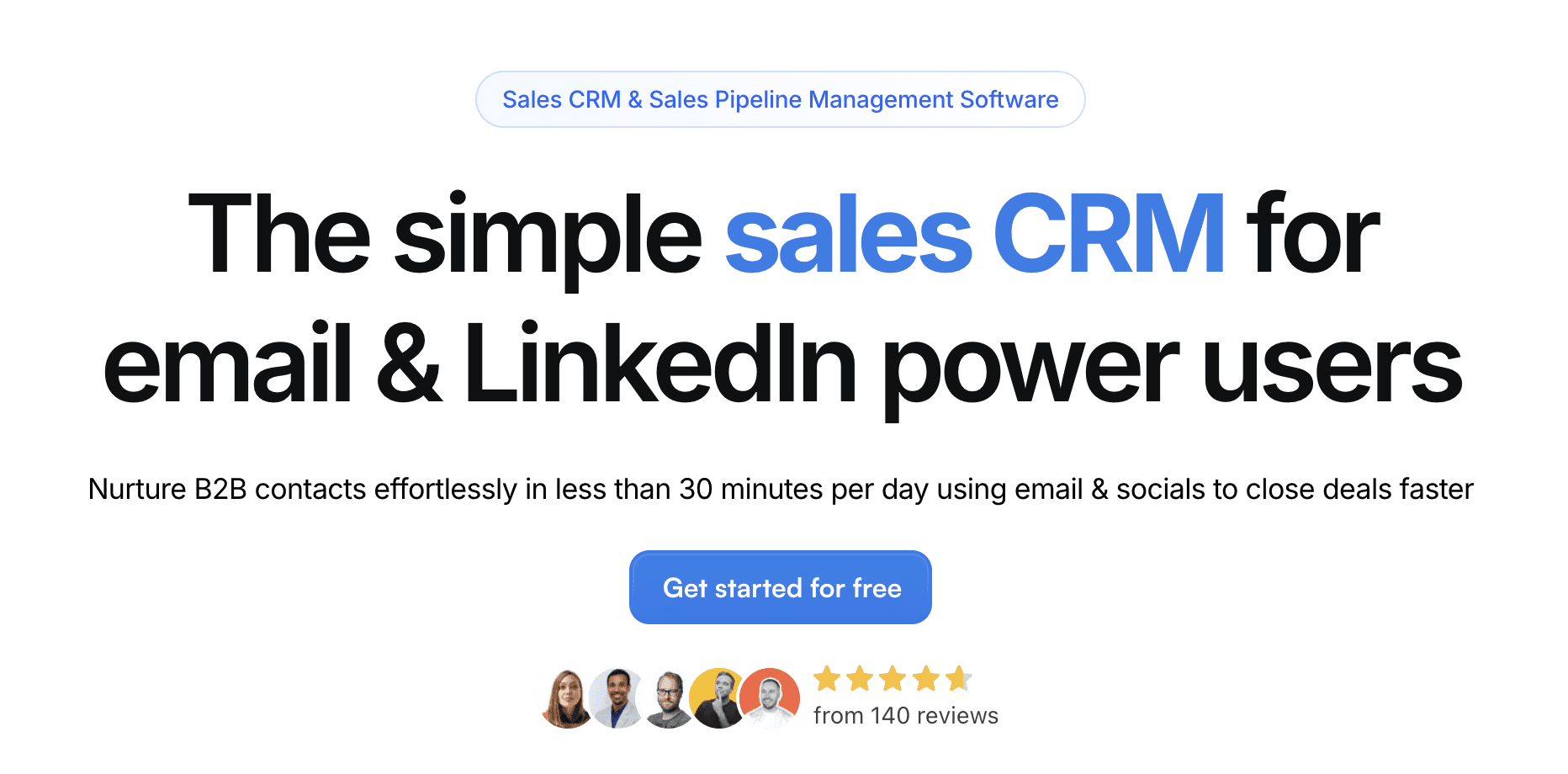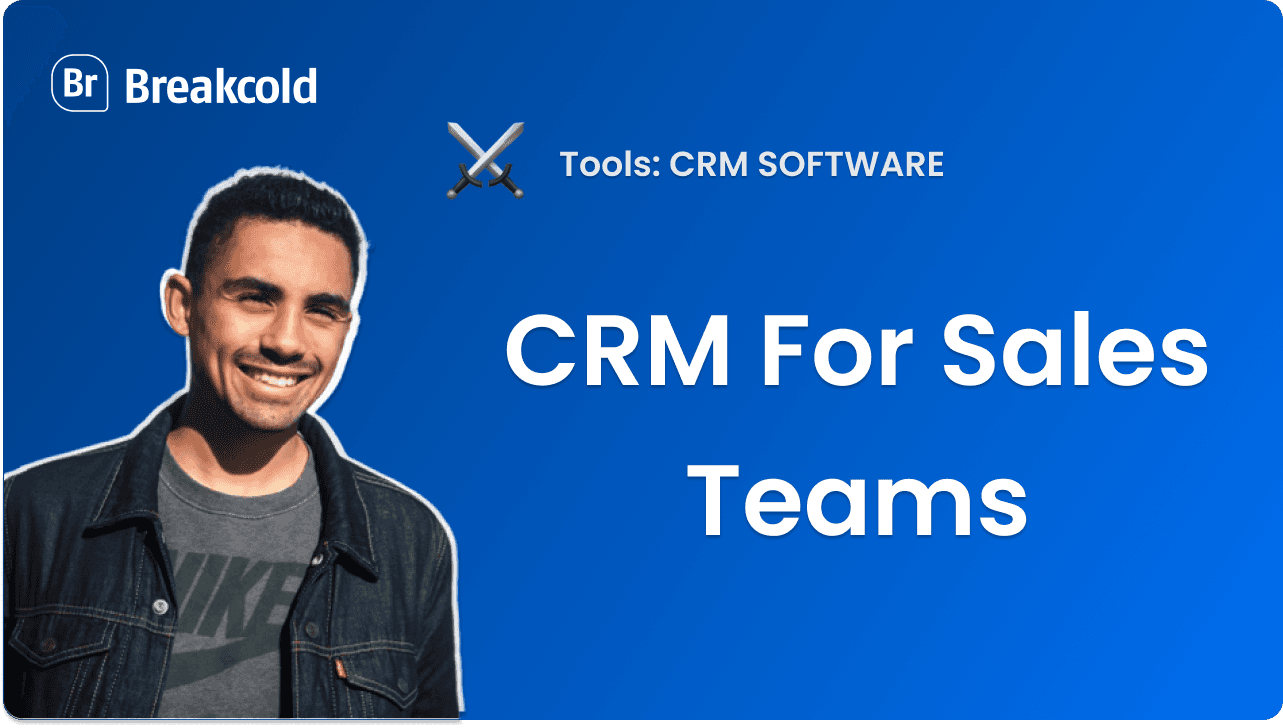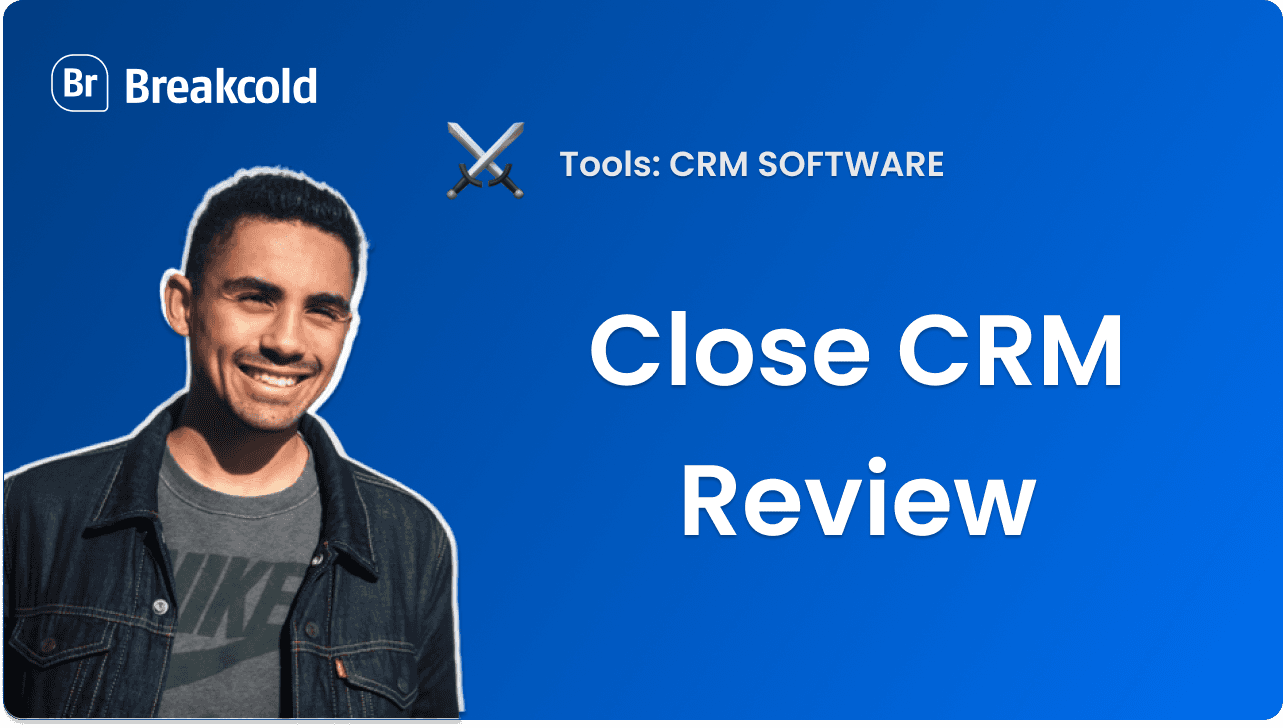Het is date night. Jij en je date zijn klaar om te ontspannen met een lekkere maaltijd en een film. Maar terwijl je eindeloos door je streamingplatform scrolt, is je date aan hun telefoon gekluisterd. Na een tijdje vind je eindelijk de perfecte film - maar de maaltijd is koud en je date? Verdwenen.
Helaas is het een gevoel dat verkopers maar al te goed kennen: wanneer je zo gefocust bent op het achtervolgen van de “perfecte” potentiële klant, besteed je tijd en energie aan een deal die nooit gaat gebeuren. 😭
En wanneer je al uren besteedt aan het jagen op nieuwe leads, is het uitzoeken welke werkelijk je tijd waard zijn een heel andere berg om te beklimmen.
Daar komt Lead Scoring om de hoek kijken.
Wat is CRM Lead Scoring? 🤔
Waarom is CRM Lead Scoring Belangrijk?

PSST! Je hebt het niet van mij gehoord, maar... 🤫 | ||
|---|---|---|
Lead scoring is een krachtige maar eenvoudige manier om verkopers te helpen bepalen welke potentiële klanten het meest waarschijnlijk klanten worden. Door scores toe te wijzen op basis van acties (zoals het openen van een e-mail of antwoorden) of kenmerken (zoals functietitel of bedrijfsgrootte), kunnen verkopers snel de leads die het belangrijkst zijn prioriteren. Dit bespaart niet alleen tijd - het filtert ongeschikte potentiële klanten eruit, zodat je team zich kan richten op de deals die het meest waarschijnlijk zijn om te sluiten.
Voorbeelden van lead scores voor verschillende eigenschappen:
Kenmerk | Voorbeeldcriteria | Score |
|---|---|---|
Functietitel | "Director," "VP," of "C-level" | +10 |
Afgemeld van E-mails | Onthecht | -20 |
Bezochte Prijspagina | Hoog-intentie gedrag | +15 |
Geen Activiteit in 30+ Dagen | Koude Lead | -30 |
Voordelen van CRM Lead Scoring

Naast het besparen van bedrijven tijd en geld, helpt lead scoring ook:
Verhogen van Verkoop Efficiëntie – Wanneer je weet wie je hoogwaardige leads zijn, kun je stoppen met het verspillen van tijd aan lauwe potentiële klanten. Deze leads zijn al betrokken en waarschijnlijker om te converteren - ze willen jouw klant zijn.
Verbeteren van Marketingstrategie – Marketingteams krijgen inzicht in de prestaties van campagnes in realtime door lead scores. Hoe sterker de campagne, hoe hoger de leadkwaliteit - waardoor directe feedback wordt gegeven over wat werkt.
Verbeteren van Verkoop en Marketing Afstemming – Lead scoring helpt om het ware ICP (Ideale Klantprofiel) van je bedrijf te definiëren, waardoor een gedeelde structuur ontstaat die beide teams kunnen begrijpen en op kunnen handelen.
📈 De voordelen van de lead scoring tool van Breakcold gaan verder dan alleen de ROI verhogen! 📈 → krijg frisse inzichten in gebieden van je verkoop-pijplijn waarvan je ooit dacht dat ze buiten bereik waren. Kijk naar onze demo-video - of nog beter, probeer onze lead scoring tool zelf en zie wat je ontdekt. | ||
|---|---|---|
Zijn Lead Scoring en Lead Grading Hetzelfde?

Het korte antwoord: Nee. Ze kunnen een vergelijkbare functie vervullen in het beoordelen van leads, maar bieden beide zeer verschillende inzichten.
Het lange antwoord:
Lead scoring meet hoe geïnteresseerd een lead is in jouw bedrijf. Het is gebaseerd op het gedrag van de lead - zoals het openen van e-mails, websitebezoeken, of het downloaden van inhoud - en helpt te bepalen hoe betrokken ze zijn bij jouw merk.
Lead grading meet hoe waardevast of gekwalificeerd een lead is voor jouw bedrijf. Het evalueert factoren zoals functietitel, industrie, bedrijfsgrootte en locatie om te bepalen hoe goed de lead overeenkomt met jouw ICP.
Heb je een Lead Scoring Model Nodig?
Als je een klein bedrijf of startup bent, kan het implementeren van een lead scoring model niet urgent aanvoelen. Op kleinere schaal kunnen je verkopers vaak leads handmatig beheren en koesteren zonder veel moeite.

Maar naarmate je bedrijf groeit, veranderen de zaken - en snel. Hier zijn een paar belangrijke signalen dat het tijd is om te investeren in een lead scoring systeem:
Je verkopers zijn overbelast en hebben moeite om tijdig te reageren op leads.
Tijd wordt verspild aan het koesteren van lage kwaliteit leads in plaats van je te richten op hoog-intentie potentiële klanten.
Er is geen duidelijke strategie om leads in de pijplijn te prioriteren.
Je sluitingspercentage is consequent laag, en je weet niet waarom.
Als een van deze situaties jou bekend voorkomt, is het waarschijnlijk tijd om te stoppen met raden - en beginnen met scoren.
Problemen met het beheren en koesteren van leads? | ||
|---|---|---|
Lead Scoring Modellen Om Te Overwegen 🧠
Demografisch/Firmografisch Lead Scoring

Demografische gegevens evalueert individuen op basis van eigenschappen zoals leeftijd, geslacht, inkomen, opleiding en beroep. Firmografische gegevens beoordeelt bedrijven op basis van criteria zoals industrie, bedrijfsgrootte, locatie en omzet.
Dit model werkt goed voor bedrijven van alle groottes, van startups tot grote ondernemingen. Het is vooral effectief voor bedrijven die afhankelijk zijn van:
Geïnvesteerde marketingstrategieën die zijn afgestemd op specifieke klantsegmenten.
Verkoopinspanningen gericht op hoogwaardige accounts in sleutelmarkten.
Segmentatie en targeting binnen marketingcampagnes om verschillende doelgroepprofielen te bereiken.
Gedrags Lead Scoring

Zoals de naam al aangeeft, gedragsgegevens scoren leads op basis van hun acties en interacties met jouw merk via verschillende kanalen. Dit model is bijzonder nuttig voor het identificeren van belangrijke indicatoren die suggereren dat een potentiële klant verkoop-klaar is.
Het is vooral effectief voor B2B-technologie en SaaS-bedrijven, waar het wordt verwacht dat potentiële klanten omgaan met meerdere contactpunten - zoals webinars, demo's of prijspagina's - om de waarde van het product volledig te begrijpen.
Aankoop Intentie Model

Intentiegegevens onthullen wanneer een lead of klant is begonnen met de aankoopreis door hun webactiviteit te analyseren via eerste- en derdepartijdigitale bronnen. Dit model is bijzonder effectief voor het helpen van verkoop- en marketingteams bij het identificeren en betrekken van potentiële klanten vroeg in het besluitvormingsproces.
Predictive Lead Scoring

Predictief scoren maakt gebruik van kunstmatige intelligentie (AI) en machine learning om historische gegevens te analyseren, patronen te identificeren en te voorspellen welke leads het meest waarschijnlijk converteren. Door realtime gegevens van klantinteracties, CRM-gegevens en externe databases te integreren, past predictief scoren zich voortdurend aan en verfijnt het zijn nauwkeurigheid.
Hoewel het ooit een hulpmiddel was dat voorbehouden was aan grote ondernemingen met uitgebreide gegevensbronnen, hebben innovaties in cloudgebaseerde oplossingen predictief scoren toegankelijk gemaakt voor bedrijven van alle groottes.
Lead Bronnen

Laat je niet misleiden door de eenvoud van source-based scoring. Het kwantificeren van leads op basis van hun bron - of het nu verwijzingen, e-mailcampagnes of sociale media zijn - is een zeer effectieve manier om veelbelovende potentiële klanten te identificeren.
Als je al een lead scoring model implementeert, zou je een goed idee moeten hebben van waar je beste leads vandaan komen. Heb je een hint nodig? Verwijzingen. Ze zijn vaak de sterkste bron voor de meeste bedrijven.
Negatieve Scoring en Spam Detectie

Niet alle leads zijn gelijk. Daarom markeert een robuust scoringmodel niet alleen veelbelovende potentiële klanten - het filtert ook ongeschikte of irrelevante leads eruit, waardoor verspilde tijd en moeite wordt voorkomen.
Voorbeelden van Negatieve Scoring Criteria:
Afmelden van je e-maillijst.
Spam of irrelevante aanvragen indienen.
Contact is een concurrent.
Interne teamlid.
Vriend of familielid.
Negatieve scores toekennen aan deze gedragingen helpt om positieve scores te neutraliseren en effectief ongeschikte leads uit je pijplijn te verwijderen, zodat je verkoopteam zich alleen richt op oprechte kansen.
Best Practices voor Lead Scoring 💪
Creëer Leadprofielen op Basis van Klantgegevens
Voordat je de kwaliteit van elke lead beoordeelt, moet je eerst weten waar je moet kijken - en dat is waar segmentatie van je ICP van pas komt.
Begin met het verdelen van je leads in twee groepen: geconverteerde leads en dode leads. Pas vervolgens je lead-scoringcriteria toe om alle geconverteerde leads te rangschikken. Dit geeft je een duidelijk beeld van het soort leads dat je aantrekt en de strategieën die het beste werken om hen te betrekken.

Identificeer Aanvullende Lead-Scoringcriteria
Je hebt misschien al een lead scoring systeem in plaats, maar het kan nooit kwaad om aanvullende modellen te overwegen. Tenslotte is het uiteindelijke doel om leads te koesteren en te converteren naar klanten - organisch.
Één scoringmodel kan maar zoveel gegevens bieden. Voer wat tests uit, identificeer hiaten in je inzichten en beoordeel of het toevoegen van een ander scoringssysteem je strategie kan versterken.
Voer Tests van Leadkwaliteit uit om je Lead-Scoringdrempel Te Bepalen
Nu is het tijd om het “magische nummer” te bepalen dat elke fase van je verkoop-pijplijn scheidt. Deze drempels zijn volledig subjectief, omdat elk bedrijf’s lead scoring model uniek is.
Hoewel het vinden van de juiste getallen enige trial and error met zich mee kan brengen, kan het proces worden versneld met feedback van je verkopers en klanten.

Evalueer En Pas Scores Regelmatig Aan
De klantreis evolueert altijd - en je lead scoring systeem zou dat ook moeten doen. Of het nu gaat om het maken van kleine aanpassingen aan individuele attribuut scores of het volledig herzien van je model, proactief blijven zorgt voor een gestage stroom van kwalitatieve leads.
Welke CRM's zijn het Beste voor Lead Scoring? ⚙️
Breakcold

Samenvatting + USP
Breakcold is DE sales CRM voor het sluiten van deals in 2025 en verder, niet 2015. Voorzien van krachtige social-selling capaciteiten, is Breakcold een lichtgewicht CRM dat is ontworpen voor kleine bedrijven en/of solopreneurs om hun bedrijven organisch te laten groeien - één betekenisvolle verbinding tegelijk.
Belangrijkste Kenmerken:
Social Selling Tools
Gecombineerde Inbox
Social Engagement Feed
Sales Pipeline Management
Beoordelingen + Voor- en Nadelen
Beoordelingen van Breakcold | |
|---|---|
G2 - 4.7/5 (116) | Capterra - 4.8/5 (93) |
Voordelen | Nadelen |
|
|
Monday.com Sales CRM

Samenvatting + USP
Gebouwd op Monday.com - een flexibel werkbesturingssysteem voor project- en taakbeheer - is Monday CRM een aanpasbaar, no-code verkoopplatform dat bedrijven helpt het gehele verkoopproces te beheren en te automatiseren, van leadgeneratie tot post-salesactiviteiten.
Het is ideaal voor teams die op zoek zijn naar een CRM dat minder rigide en gemakkelijker aan te passen is dan traditionele opties zoals Salesforce of HubSpot. Beschouw het als een "drag-and-drop" CRM vol krachtige automatiseringsfuncties.
Belangrijkste Kenmerken
Leadbeheer
Activiteitenbeheer
Pijplijnbeheer
Begeleide verkoop
Visualisatie en Analyse
Kansenbeheer
Gegevens- en prognosebeheer
Account- en contractbeheer
Voorstellen en offertes
Platformintegratie
Cross-team samenwerking
Beoordelingen + Voor- en Nadelen
Beoordelingen Monday CRM | |
|---|---|
G2 - 4.6/5 (921) | Capterra - 4.7/5 (406) |
Voordelen | Nadelen |
|
|
Salesforce CRM

Samenvatting + USP
De pionier die de CRM-revolutie begin jaren 2000 op gang bracht, Salesforce is nog steeds het platform bij uitstek voor het beheren van klantengegevens, het stroomlijnen van verkoopactiviteiten en het uitvoeren van marketingcampagnes.
Belangrijkste Kenmerken:
Sales Cloud
Marketing Cloud
Service Cloud
Chatter
Salesforce Einstein
Beoordelingen + Voor- en Nadelen
Salesforce Beoordelingen | |
|---|---|
G2 - 4.4/5 (23,272) | Capterra - 4.4/5 (18817) |
Voordelen | Nadelen |
|
|
Laatste gedachten + Takeaway 💭
Lead scoring is niet zomaar een verkoophulpmiddel - het is HET hulpmiddel om je verkoopteam te helpen zich te concentreren op de juiste leads. Door je te richten op hoogwaardige potentiële klanten, kun je je verkoopproces stroomlijnen, de productiviteit verhogen en de ROI maximaliseren.
Als je nog geen gebruik maakt van lead scoring, is het nu de tijd om te beginnen. Beoordeel je CRM-opties en kies er een die aansluit bij de behoeften van je team. Hoe sneller je een lead scoring systeem implementeert, hoe sneller je meer deals kunt sluiten met minder moeite.

















![Les 6 meilleurs CRM LinkedIn en 2025 [Comparaison]](https://framerusercontent.com/images/Luywfni7ZKjb19yghbhNPy4I4qQ.png)
![Les 5 meilleurs CRM Twitter [Comparaison]](https://framerusercontent.com/images/EWcbvYnVZglJLO8jp3OlHkTvsHo.png)
![The 8 Best Social CRM Software in 2025 [Comparison]](https://framerusercontent.com/images/RYHyYapdgIi83BEWtMdX418.png)
